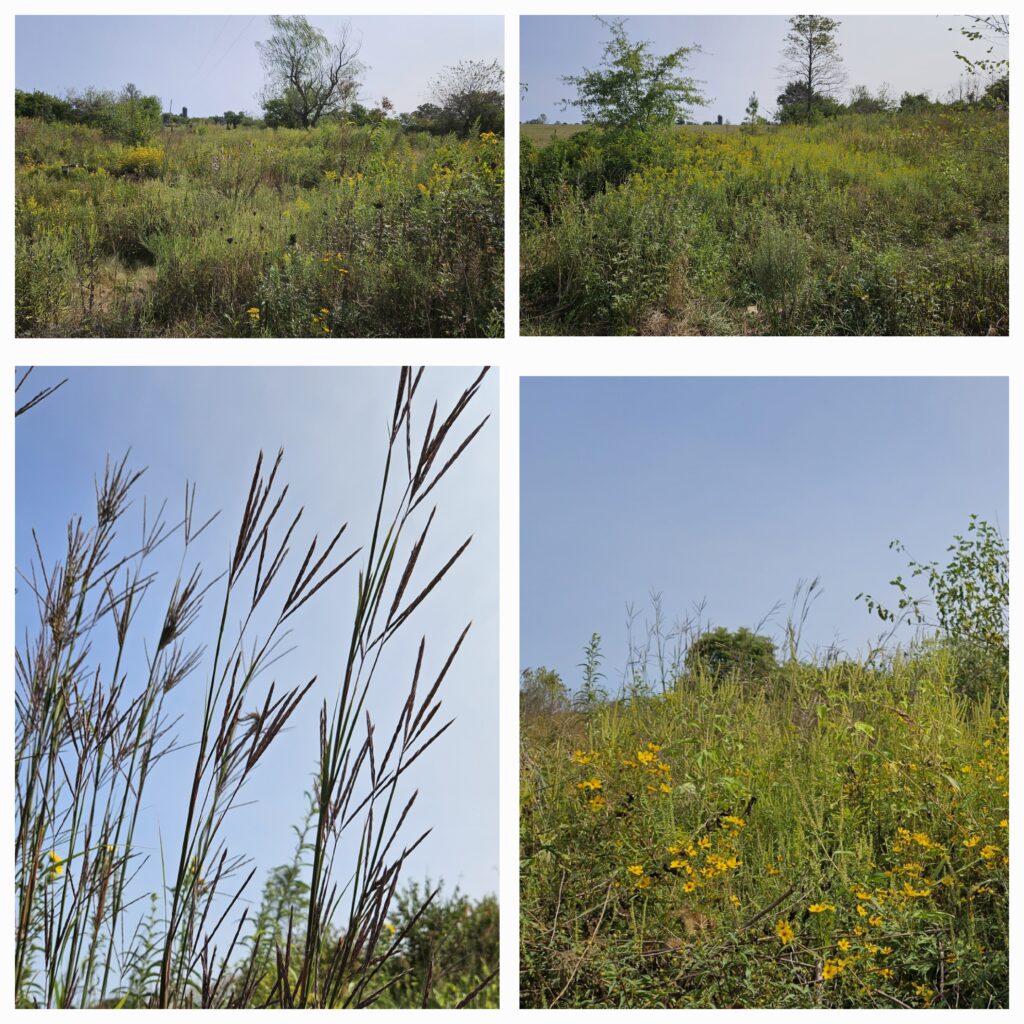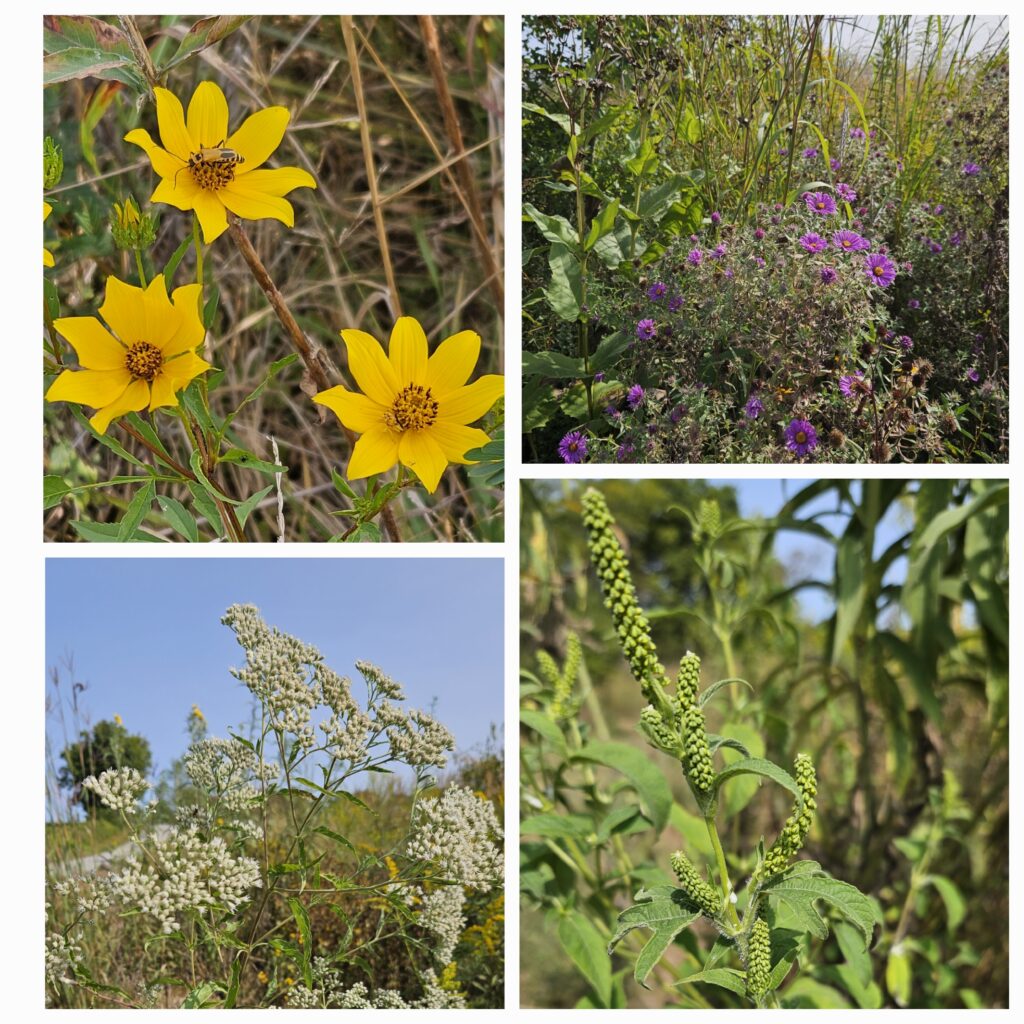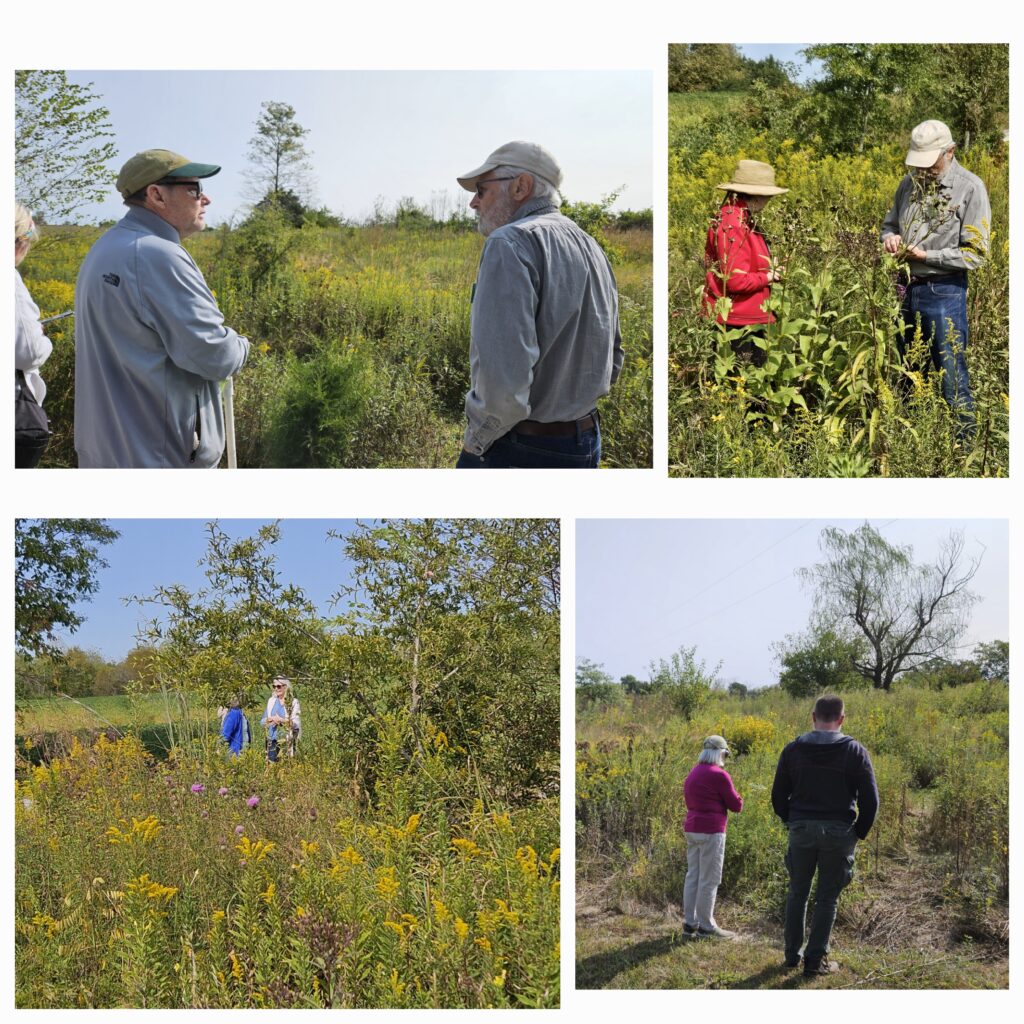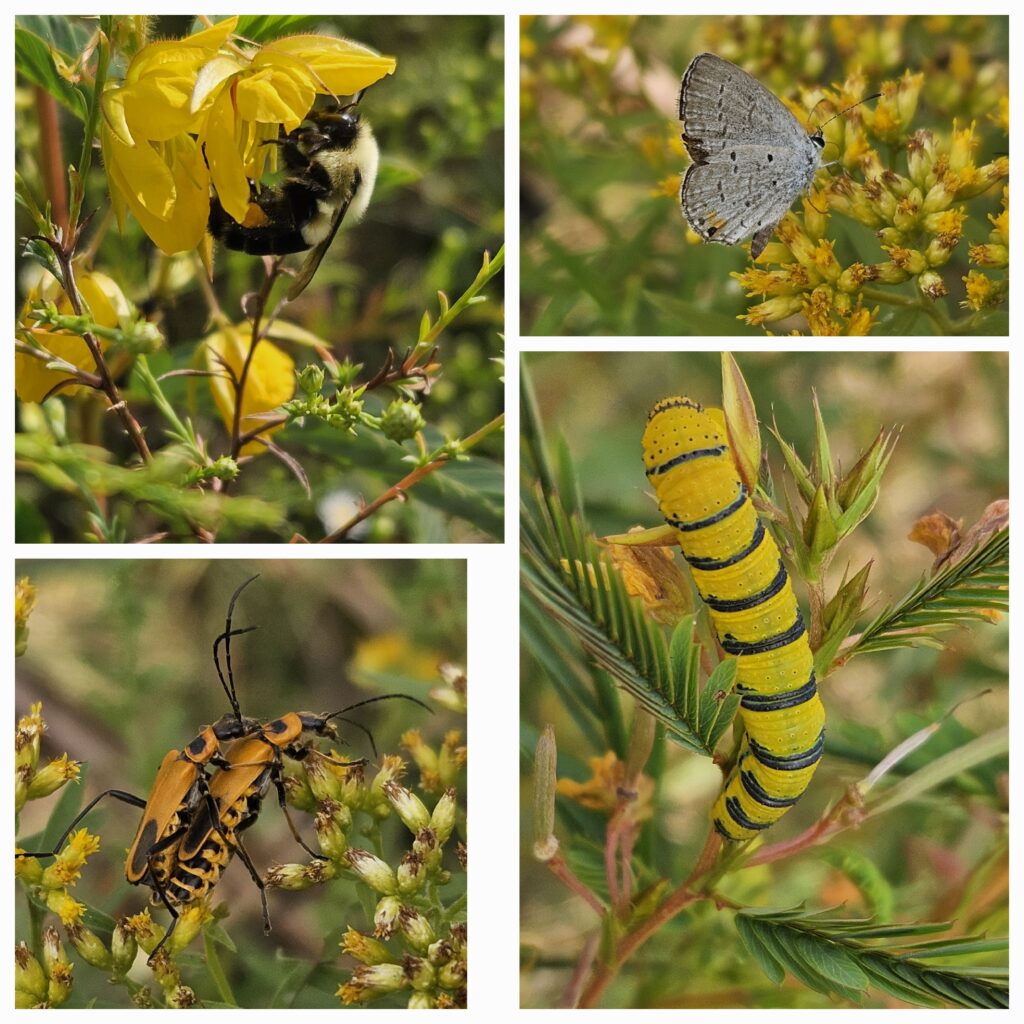September 8 was a beautiful sunny day. One where we could enjoy a cooling breeze, banish thoughts of the
oppressively hot and dry summer we’ve had, and enjoy an unusual “garden” tour at Mark Yost’s home in
Simpsonville. I say unusual, because it WASN’T a garden tour at all! Instead, we were treated to a tour of
Mark’s grand transformation of an “acre plus” of typical turf grasses and weeds that we all know and “love”
in our own grassy patches, into a native wildflower meadow/savannah.
I’ve been admiring Mark’s posts of his meadow on our WOL Facebook Group page over the last 3-4 years,
so I knew he had been making sizeable progress there in establishing native grasses and forbs (non-grass
flowering plants in fields). But I didn’t learn until we’d all assembled that day in his yard that he started
converting the first section of his 1+ acres to wildflower meadow eight years ago! So, he wisely knew that
you shouldn’t start off doing the whole area at once, especially since he was handling this landscape
conversion essentially single handedly! He started restoring new sections about every 2 years since then.
After about 15 of us had assembled, Mark told us the history behind his purchase of the property for this
purpose. His property had been mown grass dotted with a few large trees and some saplings. His property is
surrounded by corn and soy fields. He didn’t plow up the area beforehand but instead tilled smaller strips
and sowed seed mixtures he obtained from Roundstone Nursery. He has changed seed mixes at least once as
he learned more about what would “take’ and what he preferred to have growing. Once plants were well
rooted after growing a couple of years, he would control weeds and unwanted woody growth via controlled
spring burns (after spraying down tree saplings and other plants he wanted to survive). He controls weeds,
including unwanted original grasses with a no-spray herbicide applicator, and demonstrated how he uses it.

His vision is to add tree species like oaks and sumac by collecting and casting out seeds. But he also plants some species of trees and shrubs as “whips”. Deer are, of course, an issue he has to deal with. Unlike most of us who are content seeing American Goldfinch eating our Purple Coneflower seeds in our yards, Mark is managing his meadow/savannah to feed birds and other wildlife with nutritious seeds. That means he has
planted species that most of us typically avoid in a small urban garden- ones that are prolific seed producers and in small garden could take over to suppress preferred floral diversity. Those include seeds of wild sunflowers, nutritious grasses like Indian Grass and Big Blue Stem, and high protein legumes like the annual Partridge Pea and perennial Wild Senna (which he is now not allowing to reproduce so his neighbor’s cattle won’t eat volunteers that might pop up in nearby property. Senna seeds gives cattle such extreme diarrhea that they dehydrate and die! Who knew? By the way, it is the active ingredient in the natural laxative, Senokot, but we have access to water). And lest I forget Common and Giant Ragweed. Yes, these ragweeds are native and produce many seeds that are particularly sought after by birds in winter.

Then it was time to venture out into the meadow. Despite the weeks of drought, many plants were blooming
including ironweed, partridge pea, thistle, common ragweed, goldenrods (he is trying to reduce aggressive
Canadian goldenrod in favor of others like stiff and flat-topped goldenrod), Indian grass, Brown-eyed
Susans, late boneset, New England aster, and tickseed sunflower. And there were some pollinators around, a
caterpillar of the Cloudless Sulphur butterfly, Eastern tailed blue butterfly, goldenrod soldier beetles, a blue-
winged Scoliid wasp, a jungle dragon nymph, and common eastern bumble bees. Mark was very generous
with his time, advice and seeds. He said we were welcome to collect seeds of all plants except his two
species of ironweed and great blue lobelia because few of these have established so far.
Several of us sought him out for one-on-one conversations to request more details about how he established
his meadow. He now has years of experience under his belt and generously shares what he knows. Now you
may understand why whenever someone on our Facebook group or just people I know personally ask
questions about establishing a meadow, I send them to Mark for sound advice! After an hour or more “in
the weeds”, we gathered again by a table under a canopy to sample some goodies he provided or that some
of us folks brought. All in all, I spent a very rewarding and inspiring day at Mark’s. And I heard more of us
happily say the same! Now all of us wish we had space to start a meadow and the twenty-something bodies
we once had to accomplish that ambitious goal! (Grin).



